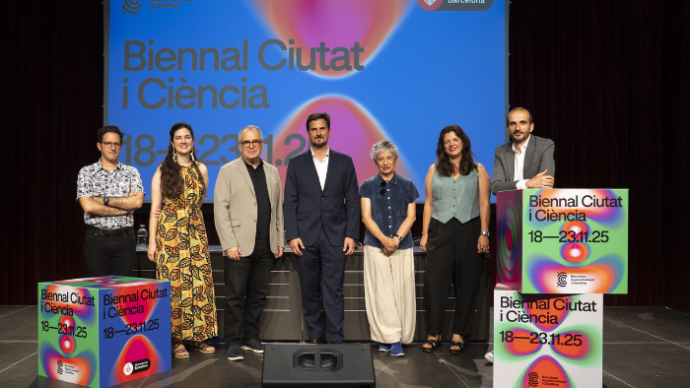The fourth edition of the City and Science Biennial Will focus on the impact of quantum technologies
The event, which will take place between November 18 and 23, 2025, will be held simultaneously in Barcelona and Madrid.
Today the fourth edition of the City and Science Biennial (Biennal Ciutat i Ciència), which has taken place every two years since its creation in 2019, will include a wide range of activities for the dissemination of science over five days (from 18 to 23 November). After the successful participation in recent years, Barcelona and Madrid will host the event for the second time in a row, simultaneously. On the other hand, the city of Guadalajara, in Mexico, will also organize some events just a few days later, from 29 November to 7 December, in the context of the Feria Internacional del Libro, which will have Barcelona as a guest city.
The Biennial proposes an ambitious and attractive program that is aimed at all audiences. Both national and international scientific leaders will take part, to address challenges such as frontier research, which is the name given to that innovative, pioneering science that no one has done yet or that provides very valuable ideas. The activities in Barcelona will take place within the premises of El Born Museu d’Història de Barcelona and will extend to other spaces of the Ciutadella Knowledge Hub such as the Hivernacle and the UPF Campus, and also to the Convent de Sant Agustí, on Carrer Comerç.
As a result of the agreement of Barcelona being the cultural and scientific capital, the Círculo de Bellas Artes de Madrid is once again collaborating in the organization of this new edition of the Biennial City and Science. The curators of this event will be Toni Pou, Alba Cervera and HacTe in the Catalan capital, and Elisa Garrido and Carlos Sabín in Madrid. The presentation ceremony of this new edition of the Biennial took place this morning in the Sala Moragues, within the El Born Museu d’Història de Barcelona. The Deputy Mayor of Barcelona City Council, Jordi Valls, took part and highlighted that “Barcelona has understood that science and innovation are part of the character of the city and that is why it is committed, not only to major research projects, but also to finding spaces to disseminate science”. Valls assured that the Biennial meets this objective “of democratizing knowledge in order to create free citizens”.
Quantum
The Biennial will pivot in this new edition on the reflection on quantum science and technologies, within the framework of the International Year of Quantum Science and Technology, promoted and organized by UNESCO. Since the beginning of the 20th Century, this new field has brought great innovations and has transformed both social organization and the economic system. The Biennial now wants to go further and delve into the novelties of the second quantum revolution, with technologies that are progressing exponentially such as computing, communications and quantum sensors. The aim is to address, from multiple points of view, the founding principles and the imprint that this subject has left on social, economic, scientific and cultural constructions, and explore the possibilities that quantum inventions now open up for the future.
Epicenter of science dissemination
This year's program will include events ranging from exhibitions, workshops and performances to conversations and debates with relevant specialists. There will be activities designed for the youngest and meetings with the university sector. In order to make this possible, agreements have been signed with Tabakalera, the international center of contemporary culture in Donostia/San Sebastián, and with the New Art Foundation in Reus. Other institutions and entities in the city will join in with activities designed for the + Biennial program.
In Madrid, quantum games workshops, round tables on gender and science based on the publication of the Women for quantum manifesto, scientific dissemination tables and exhibitions will be organized.
The program will feature names such as Ignacio Cirac, Carlo Rovelli, Chris Ferrie, Dafna Feinholz, Amy Ireland, Philip Ball, Julio Rojas, Blanca Pujals, Alissa Ney and Desirée de Fez.
The Biennial has also had the collaboration of the graphic design studio Arauna Studio, which has produced the graphic that highlights “quantum as a visual metaphor that explores the interconnection, uncertainty and superposition of ideas. Dynamic shapes and vibrant colors that evoke a complex, random and stimulating visual universe”.
The most complete program of activities, speakers and artists will be presented in October.

